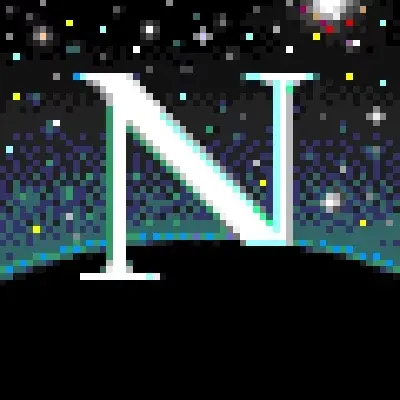My Todo app is a Markdown file because I can cross stuff out.
Same, but I use Notes by Bill Farmer to keep track of them all and set custom CSS styles.
What is the point of crossing stuff out as opposed to just deleting finished tasks? That’s what I do.
I like the archival aspect.
If needed, I can reference older entries.I repurposed this handling as a makeshift parcel tracking note in Google Keep.
deleted by creator
I guess I must have way more tasks than you, then, because I can’t be bothered with the past, haha; too much to do! No problem; to each their own.
deleted by creator
More satisfying and gives me a little more motivation to see the tasks I’ve already done.
I feel like 90% of the functionality and reason I use a Todo app is the notifications and scheduling of tasks.
Me too, in this way it’s more than just a todo list, it’s also a time management tool.
I use tasks.org, every morning all my tasks pop up and I defer them into timeslots. Before noon, afternoon, evening. Then I get another reminder at a point where I should be done with the tasks in a previous time slot.
Getting notifications about my todo lists is just annoying to me. When i wanna look at what i need to do i just open the list and look at it. I prefer not to pollute my notification with that
It’s not about the notification, it’s about being reminded.
I use a task manager because I can’t remember every task I need to do. I use reminders because I can’t remember to do the tasks I need to do.
Alright. I guess it depends on the types o tasks we have, and how our memories behave.
What do you do for time sensitive stuff like putting clothes in the dryer, or watering plants and that sort of thing?
Personally, I set a timer or alarm on my phone. It works for one-off stuff as well as recurring events. If I need more flexibility, I’ll make a calendar event that sends a push notification.
These home chores are not that complex that I need remiders. But I do have a list of stuff to buy, like food and cleaning products, on a shared text file (a shared google keep note actually, forgive me for my sins), and every tuesday or so one of us goes to the market to get those (we alternate).
Basically, whenever I have time to work on something, I try to do the most important and time sensitive things on my todo list. If I dont have enough time to do those, then I wont, and thats it, what can I do?
Yeah it’s more like I’ll forget clothes in the washer for days if I didn’t set up a reminder lol
Notion, Todoist, Things 3, OmniFocus, Asana, Trello, Any.do, TickTick.
This article is a cry for help
I find it even easier just not to do things in the first place.
I’m using .md
KISS (Keep It Simple Stupid)
That’s why i use Markor on, it saves on markdown (.md), text (.txt) files, and sync with Syncthing to other devices.Without databases, or third party hosts, i can open any file on other devices using the apps of my choice, can use Markor on Android and nvim on PC.
No need to pay extra or use specific apps to work.
I also tried other not taking apps, but I needed to use some electron app that uses 1GB RAM to edit a markdown file, and decrypt some proprietary online storage. Why use some overcomplicated software when i can do the same Kwrite or nano
For me it’s just .md files.
Same! Once I can get a way to magically sync a Markdown file to a piece of paper It’ll be perfect. In theory you can OCR from paper to a file pretty easily now.
I tried using org-mode, but eventually returned to simple plain text.
Color notation, or various enriching elements don’t help. They actually distract.
There’s the task. The task of having a TODO list. Its elements are free form by definition.
I swear, today’s tech is 99% arrogant people showing themselves how they know everything, except they don’t solve the actual task which is the only thing needed.
Like those over-engineered half-working arcane machines they portray in steampunk settings, except those at least feel cool.
It’s like that anecdote about “what buzzes, spins and doesn’t bite your ass? - a Soviet machine for biting your ass”. 2025 machines for biting your ass do everything, including almost sexual gratification of their developers from using any of a hundred of hipster libraries, frameworks and build systems, and a server component using Firebase, AWS and what not, what they don’t do is actually bite your ass. Well, they kinda scratch it.
Doing a lot is not the same as doing better.
Also I fucking hate modern UI\UX design and ergonomics (both lacking).
There’s something about the Silicon Valley and everything looking up to it. A culture of authoritarian cheap bullshit, with pretty arrogant people not capable of having a civil discussion, and when they fail that, it’s not themselves who they blame.
Honestly it sometimes feels as if all the visible things around were like that. Linux included. Also maybe BTRON for workstations not happening is a bigger tragedy than it would seem.
Obsidian just stores the data as TXT files. Only now you can have formatting, links, tags, lists, charts, images, etc.
That or Joplin. Created a checklist today for my trip and what to bring.
If Joplin had an android widget, it’d be perfect.
Logseq is very similar to Obsidian but it’s open source, if that matters. Doesn’t have the same extensibility through community plugins though.
Logseq is planning on moving to a database model (database is the source of truth) whereas Obsidian is staying with your text files always being the source of truth
But a lot of meta-data is stored somewhere extra.
So? It’s stored in the same folder locally
Saying Obsidian uses just TXT files suggest, that I could use any editor and that Obsidians file format is compatible with any editor. That is technically the truth, but the problem is, that if I decide to use another editor I might get problems because of the lacking ability to usefully edit the metadata. So, if I use Obsidian, the files are de facto not compatible with other editors.
Of course I could switch off of Obsidian and I have the raw data, so I am not locked in. But I think stating that obsidan uses just txt files without any explanation is a bit misleading.
You won’t get any problems. I’ve done it before. If you make Obsidian use Markdown links you can even sort of make links to other files through other editors, but it’s a little janky still.
Obsidian is just another WYSIWYG Editor.
What makes it a problwm is the MD-dialect they employ.For example callouts in obsidian are not possible in the markdown flavor of vs-code.
I can’t do thiy in vscode> [!warning]- > This is a collapsed warningBut that is what I quite like and I found no other programs which handles as well as Obsidian.
Maybe some parts of vscode markdown with plugins closes the gap.
There’s nothing wrong with using a good text editor. You can always use some markdown if you want basic formatting.
Emacs Org-mode!
My biggest issue with all these Markdown editors is that the format is text only, forcing other files to be stored independently. It does not support embedded pictures, formulas, etc.
My perfect option uses some format that would allow text, pictures, audio and video, optional LaTeX formatting all in one file, and wouldn’t be constrained to a single application that can run it all. At least some apps supporting it should be in a note-taking layout, not a standard office program.
Mobile support would be a banger, too, but is optional.
Essentially, I want a OneNote-like experience without walled garden, bundled in a way that would allow it to be painlessly exported into several other pieces of software, available on Linux.
Any ideas on that?
Not OpenSource, but free, reliable and private, online right in your browser, it’s a complete word processor, you can also edit Html, select webpages and paste it in the editor which conserve the original UI with all working links, Files and documets are stored locally in .htm, .pdf or .txt. Blazing fast and works also in mobile, even as PWA.
https://bluevelvet.ssuiteoffice.com/
(Part of the SSuite, it’s a hobby project of two elictricians which make money with their workshop, not with these apps, no commercial interests, no ads, logs, tracking or othe crap, no account)
Thanks! Will check it out
P.S. Seems more like a general purpose editor with a twist, though, and not a solid note-taking solition upon the first glance. Thanks for the recommendation anyway!
Well, you can use it as such, storing the notes locally with the corresponding title. You’ll find a lot more on the SSuite, maybe there you’ll find something els which may serve you, anyway good to bookmark it, it’s pretty usefull.
But I also remember another app, an old Gem, OpenSource which may fullfit your needs, it’s a very powerfull tree style note taking app, rich text format and if you need, also syntax highlighting for programming scripts. (Windows, Linux) (.rtf, .txt, scripts)
Appears to be, yep
Obsidian to an extent? Maybe? Idk.
Not really, still MD-based :(
Closest to that were Trilium and Zettlr, but again, they store media separately and address it in inconvenient ways.
How so?
I configured Obsidian to throw all media files in one directory.
All files are referenced by a common picture link
I’ve been using Quillpad for some time now. It’s kind of a “glorified markdown editor” (like Joplin) but stripped down to the only things I need: bullet lists for todo and grocery, quick notes, audio notes. Recently version 1.5 came out which allows to sync local files so it can now work with Syncthing and that made it an instant favourite for me
Same. The only thing I wish it had is the ability to embed images.
https://f-droid.org/packages/de.tnmgl.ntodotxt
I have used flat txt files and also ntoodotxt for other stuff. Sync them all with syncthing.
For a while I had been using the “To Do” list that’s built in through Hotmail and the iOS app.
But nowadays I’ve been using TickTick app for the to-do’s.
TickTick is incredible, I don’t know why it isn’t more popular.
I have 7500+ completed tasks so far.
















